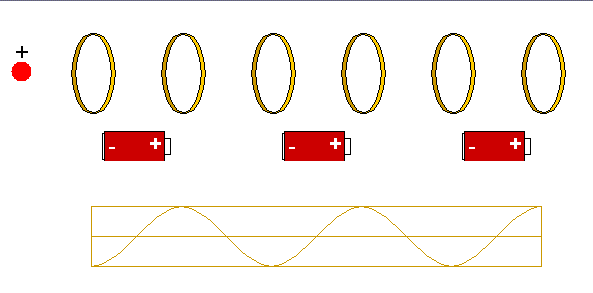Notice that since the field vector, as determined by the electric field generating rings, depends on the distance between interacting particles, and this arises from the fact that opposites are attracted and likes are repelled, as a particle nears the ring generating the field, it is under less and less net force:

As the particle passes the ring, it actually experiences a force in the opposite direction,
slowing it instead of accelerating it. For this reason, the charge on the rings must be
reversed as the particle passes through each of them. This results in an oscillating
electric field. Since a changing electric field results in a magnetic field, this results
in an oscillating electromagnetic field, or a radio frequency (RF) cavity.
In a magnetic field B, a charge q moving at velocity v will experience a Lorentz force
Since the force is always perpendicular to both
the velocity and the magnetic field, a particle traveling in a uniform magnetic field will
take on a circular motion due to the magnetic field.
Here, although it is dim, you can see an electron beam in an adjustable magnetic field set
up in one of the University of Windsor's undergraduate physics labs. Note how the beam
curves to different radii as the strength of the magnetic field is changed.

